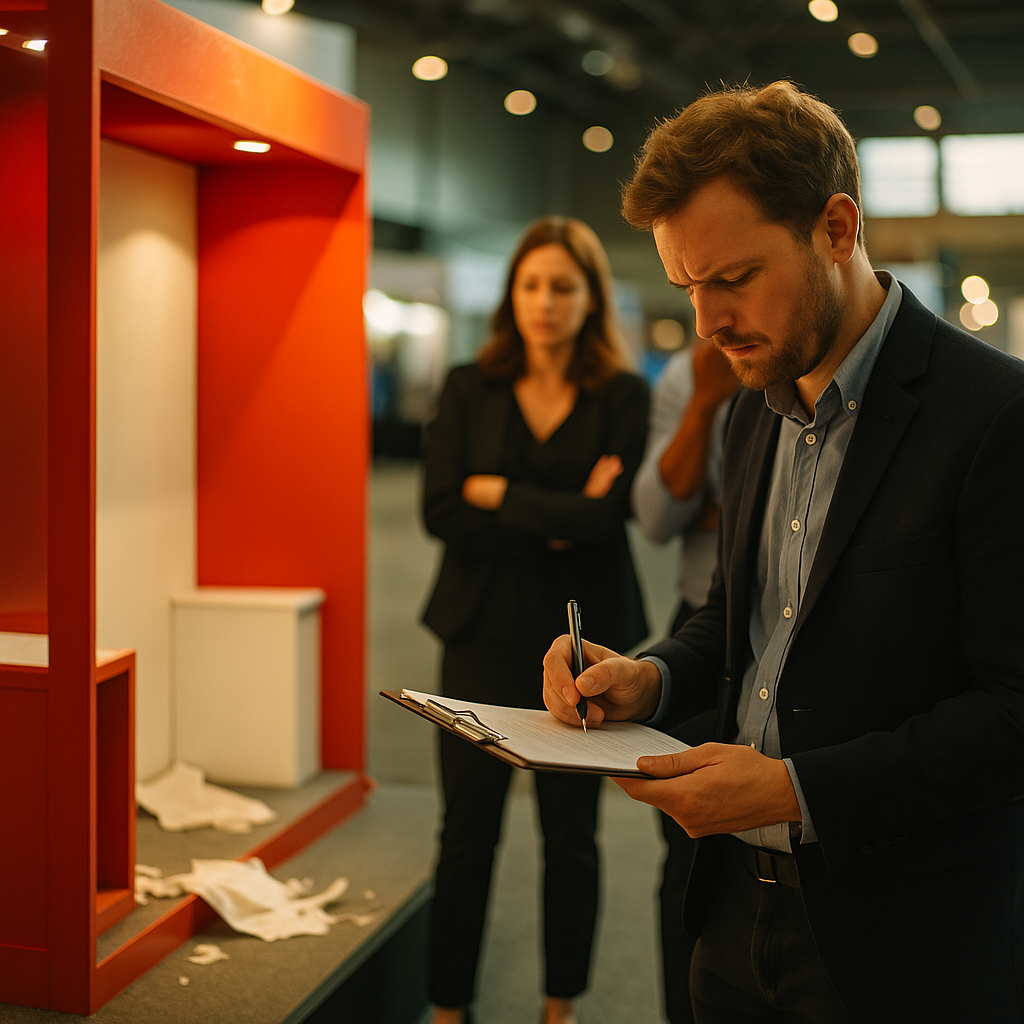At trade shows, your booth’s design can make or break your brand’s impact. But what happens when even your best plans for a trade show booth design fail to attract visitors? Let’s examine a trade show post-mortem to uncover where things went wrong—and how to fix them.
Understanding the Power of Trade Show Display Design
A compelling booth design is your first opportunity to seize attention and spark engagement. According to the Center for Exhibition Industry Research, 81% of trade show attendees have buying authority and 92% are seeking new products. To convert foot traffic into leads, your display must quickly communicate value, professionalism, and credibility. When this fails, low visitor turnout isn’t just disappointing—it’s a costly missed opportunity.
Brands often mistake size for effectiveness or overlook core elements like layout and visuals. Clarity, interactivity, and alignment with your target audience matter more than just flashy graphics. If visitors walk by, confused or unimpressed, it’s time to dissect exactly why.
Analyzing Booth Visitor Engagement at the Trade Show
Effective trade show booth engagement starts with understanding attendee psychology. Warm, inviting aesthetics, clear messaging in a bold font, and relevant interactive elements all help draw in passersby. However, in this case study, engagement was low. Staff reported minimal conversation and lead capture; even giveaways generated little interest.
What went wrong? Tracking attendee flow and responses highlighted key issues:
- The booth location was at the edge, reducing visibility.
- Messaging didn’t explain the product’s core benefit fast enough.
- Graphics overwhelmed rather than informed—too much text, inconsistent color scheme.
- No hands-on demos or interactive content.
- Staff were focused inward or digital devices instead of greeting visitors proactively.
This highlights that a trade show booth’s visual engagement must be coupled with an overall plan for real-time visitor interaction.
Common Trade Show Booth Design Mistakes to Avoid
From layout to brand storytelling, even small missteps in trade show booth design can turn attendees away. In this trade show post-mortem, several critical mistakes became obvious:
- Poor Lighting: Dull lighting made the display look unwelcoming, while nearby competitors sparkled.
- Inaccessible Layout: Furniture obstructed the entrance, discouraging entry.
- Lack of Focal Point: No centerpiece drew the eye or encouraged attendees to stop.
- Unclear Branding: Logos were small or lost among visual clutter. Attendees couldn’t immediately identify who the exhibitor was or what they offered.
- No Interactive Elements: Attendees today love hands-on demos, AR/VR experiences, or social media walls—none of which were present.
A post-mortem of each design element clarified how every overlooked detail contributed to the booth’s low engagement.
Why Audience-Centric Booth Strategies Matter
Modern event marketing is about creating memorable experiences. Successful booths are audience-centric—not generic. The failed booth design ignored attendee demographics, interests, and buyer journeys. A recent Event Marketer survey found that 77% of attendees value personalization during trade shows in 2025.
Essential audience-focused strategies include:
- Pre-show outreach: Use targeted email and social media campaigns to invite ideal visitors.
- Clear messaging: Tailor language and imagery to resonate with your primary audience and their pain points.
- Live demonstrations: Showcase solutions in action for a tactile experience.
- On-site engagement: Train staff to greet, engage, and qualify visitors proactively, not passively wait.
Ignoring these steps results in missed connections—even with an otherwise attractive booth.
Key Takeaways from the Trade Show Post-Mortem
This trade show experience underlines vital best practices for maximizing booth ROI in 2025. Key lessons include:
- Prioritize clear, audience-focused messaging above flashy design elements.
- Choose booth placement wisely—edge or corner spots can mean invisibility.
- Build interactivity into your booth, from tech-driven demos to physical samples.
- Train your team for proactive, welcoming engagement.
- Audit your design with real attendee feedback before the show.
With every event, treat setbacks as an opportunity for growth. Comprehensive post-mortems turn short-term failure into long-term trade show success.
FAQs: Trade Show Booth Design Failures
-
What are the main reasons a trade show booth design fails?
Common reasons include poor location, cluttered or confusing visuals, lack of interactivity, unclear messaging, inattentive staff, and not tailoring the booth experience to the target audience.
-
How do you attract more visitors to your trade show booth?
Use crisp branding, interactive displays, clear signage, lead-generating activities, and trained staff actively greeting passersby. Announce your presence via pre-show emails and social campaigns.
-
Why is booth location important at a trade show?
High-traffic central or corner spots receive more natural footfall. Edge or remote locations can make your booth nearly invisible, no matter how creative the design.
-
What is the most effective way to evaluate booth performance after a trade show?
Review metrics like visitor count, qualified leads captured, sales conversions, and staff feedback. Collect attendee input to identify what worked and what did not—then adjust your booth strategy accordingly.
In summary, when booth design fails at a trade show, a careful post-mortem can transform disappointment into actionable insights. Putting audience needs, clear messaging, and staff engagement first ensures your next event will attract the attention—and results—you need.
